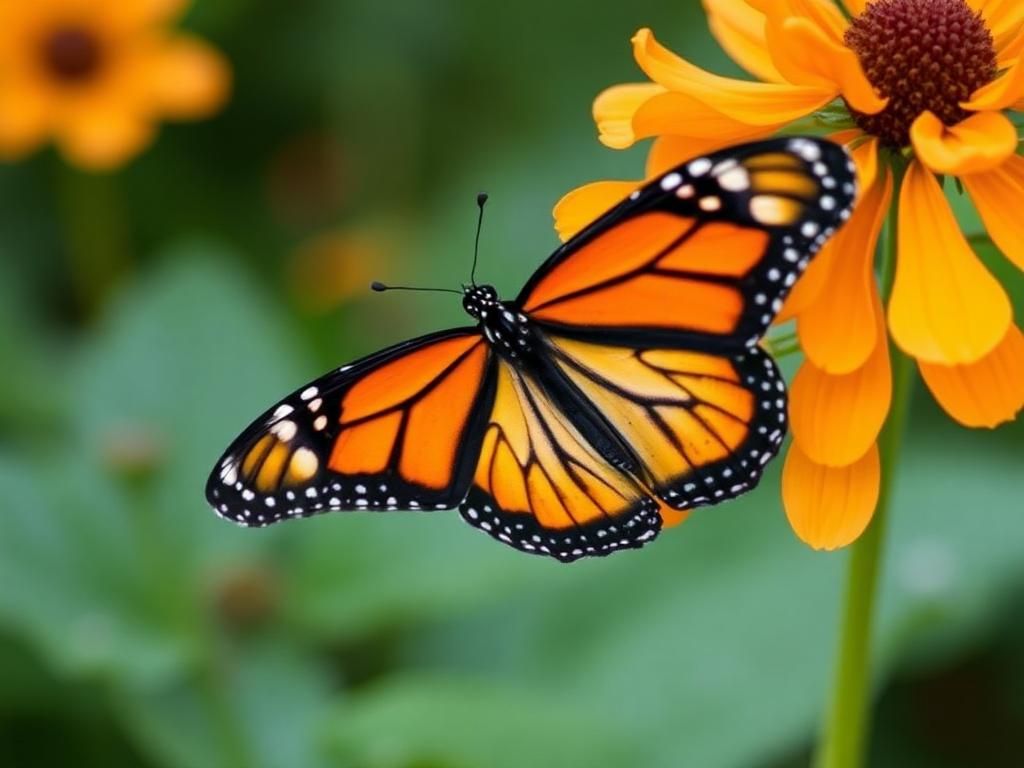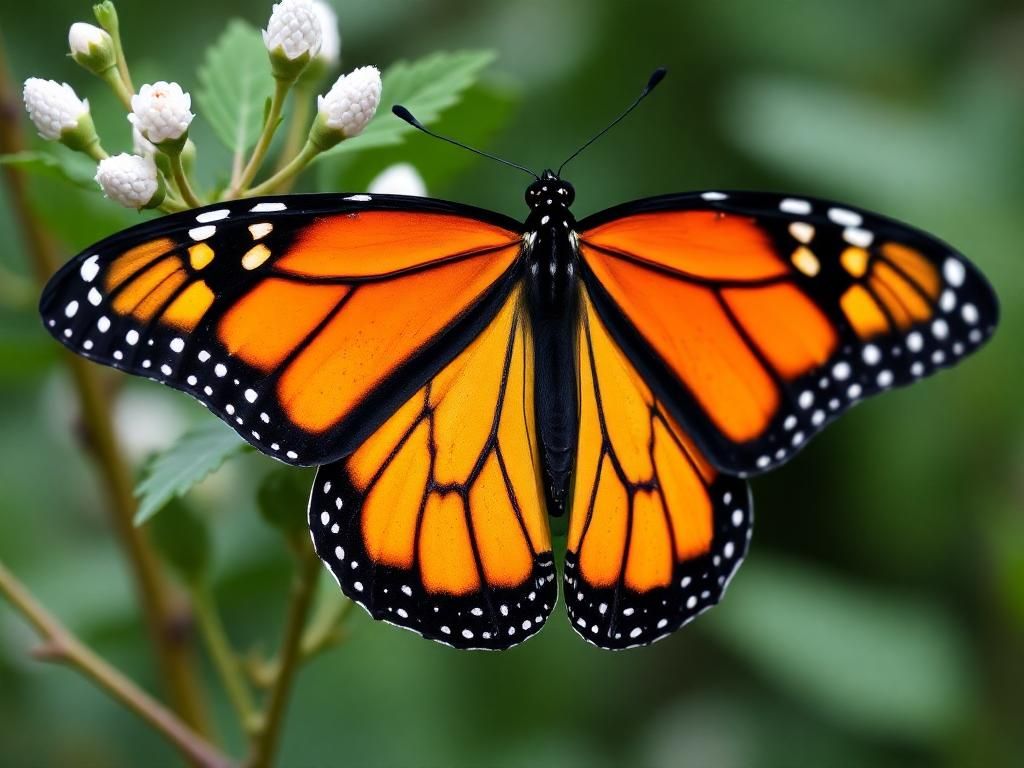Overview of the Monarch Butterfly
The monarch butterfly (Danaus plexippus) is a striking species known for its vibrant orange wings adorned with black borders and white spots. As one of the most recognized butterflies worldwide, its lifecycle, unique migration patterns, and ecological roles make it a captivating subject. Each year, millions of monarchs embark on a remarkable journey, traveling thousands of miles from North America to central Mexico, demonstrating their extraordinary navigational abilities and resilience. This migration not only highlights their crucial role in ecosystems, such as polinators for various plant species, but also represents broader themes of change and renewal.
Significance of Symbols in Nature
Symbols play a vital role in various cultures, providing meaning and context to the natural world. In essence, symbols are representations that convey deeper values and narratives, transcending mere existence. Animal symbols, like the monarch butterfly symbol, resonate deeply, often embodying concepts such as transformation, freedom, and renewal. Their representation in folklore and mythology underlines the intrinsic connection humans feel with nature and the lessons we glean from it.
Cultural Symbolism of the Monarch Butterfly
Historical Significance
Throughout history, the monarch butterfly has held significance in various ancient civilizations. Indigenous cultures across North America revered the monarch as a symbol of change and migration, embodying the spirit of transformation that resonates with their beliefs. For instance, the Aztec civilization associated butterflies with resurrection and the souls of departed ancestors, viewing them as divine messengers.
Contemporary Symbolism
In modern times, the monarch butterfly symbol continues to be a poignant representation of transformation. Artists and writers frequently use the butterfly motif to illustrate personal growth and the inevitable cycles of life. The butterfly’s metamorphosis from caterpillar to adult serves as an inspiration for many contemporary pieces in literature, visual arts, and even marketing. Brands often adopt the butterfly as a motif to symbolize their commitment to change and innovation, showcasing its widespread appeal in popular culture.
Monarch Butterfly and Transformation
Metaphor for Change
The lifecycle of the monarch butterfly, characterized by stages of egg, larva, pupa, and adult, is a powerful metaphor for personal growth and transformation. This journey underscores key principles of change: the egg represents potential, the larva symbolizes growth and feeding, the pupa embodies the process of self-reflection and consolidation, while the adult butterfly epitomizes the realization of one’s potential and freedom. This transformation resonates with individuals seeking meaning in their own experiences, reinforcing the monarch butterfly symbol as a beacon of change.
Resilience and Survival
The migration journey of the monarch butterfly is fraught with challenges, including extreme weather, predators, and habitat loss. Despite these hardships, their remarkable adaptability allows them to thrive, making them a symbol of resilience. The monarch butterfly symbol reflects not only the beauty of transformation but also the strength required to overcome obstacles. For many, this embodies the essence of survival, teaching us to embrace challenges and adapt to changing circumstances.
Monarch Butterfly in Spirituality
Spiritual Symbols Across Different Cultures
Monarch butterflies often feature prominently in spiritual contexts, revered as messengers of change or renewal. In many cultures, they occupy substantial spaces within mythology and folklore, representing redemption and inner wisdom. For instance, in certain Native American traditions, butterflies are seen as carriers of prayers and thoughts, connecting the physical and spiritual realms.

Connection to the Afterlife
In many Latin American cultures, particularly during Día de los Muertos (the Day of the Dead), the appearance of monarch butterflies is believed to signify the return of deceased loved ones. The vibrant butterflies are seen as souls returning home, embodying the monarch butterfly symbol of transition and remembrance, and reinforcing the connection between life, death, and rebirth.
Environmental Symbolism
Indicator of Ecosystem Health
The monarch butterfly is often regarded as a bioindicator, reflecting the overall health of ecosystems. As integral pollinators, they contribute significantly to biodiversity and ecological balance. Their decline signals disrupted habitats and changing environmental conditions, making them a crucial species for scientists and conservationists studying ecosystem health. The monarch butterfly symbol serves as a call to action regarding environmental stewardship and the need to preserve natural habitats.
Conservation Efforts and Advocacy
Various organizations and individuals are dedicated to monarch butterfly conservation efforts, highlighting the importance of protecting their habitats against urban development and agricultural practices. Programs aimed at restoring native milkweed habitats contribute to the survival of the species, while raising awareness about climate change’s impact on migratory patterns. The monarch butterfly symbol has evolved into a powerful advocacy tool, rallying communities around the cause of protecting these extraordinary creatures and their environments.
Artistic Representations
Monarch Butterfly in Visual Arts
The striking appearance of the monarch butterfly has inspired countless artists over centuries. From famous paintings to sculptures, the butterfly often embodies themes of beauty, fragility, and transformation. Artists like Frida Kahlo and contemporary muralists have used the monarch to convey powerful messages about identity and cultural connections.
Influence on Fashion and Design
The monarch butterfly symbol influences the fashion and design world as well. Its vibrant colors make it a popular motif in fabrics and patterns, adorning everything from clothing to home decor. Designers utilize the butterfly’s symbolism to evoke feelings of freedom, beauty, and the transient nature of life, making it a beloved inspiration in contemporary design movements.
Conclusion
Summary of Symbolic Meanings
In conclusion, the monarch butterfly symbolizes a myriad of concepts, including transformation, resilience, spirituality, and environmental awareness. Its profound symbolism resonates across cultures and histories, making it a potent reminder of the interconnectedness of life and the beauty of change.

Call to Action
As stewards of the environment, we can all play a role in protecting the monarch butterfly. Simple actions, such as creating habitats with native plants or spreading awareness about their migration routes, contribute to their conservation. Let us appreciate the monarch butterfly symbol as more than just a beautiful creature but as a vital part of our ecosystem and cultural heritage.
| Monarch Butterfly Symbolism | Key Aspects |
|---|---|
| Transformation | Metaphors for personal growth through life stages |
| Resilience | Symbol of survival amidst challenges during migration |
| Spirituality | Messengers for renewal and connections to the afterlife |
| Environmental Health | Indicators of ecosystem vitality influencing conservation |
| Artistic Influence | Motifs in visual arts, fashion, and design |
FAQs
What does the monarch butterfly symbolize?
The monarch butterfly symbolizes transformation, resilience, and renewal, making it a powerful emblem in various cultures.
Why is the monarch butterfly important for the ecosystem?
Monarchs serve as essential pollinators and bioindicators, reflecting the health of ecosystems while contributing to biodiversity.
How do monarch butterflies protect themselves during migration?
Monarch butterflies utilize various survival strategies, such as temperature regulation and navigation techniques, to adapt to their migration journey.
What role do monarch butterflies play in indigenous cultures?
Indigenous cultures often regard monarch butterflies as symbols of change, resurrection, and spiritual connections with ancestors.
How can individuals help conserve monarch butterfly habitats?
Individuals can plant native milkweed, avoid pesticides, and educate others about monarch butterfly conservation.
What is the significance of monarchs in Día de los Muertos celebrations?
Monarch butterflies are believed to carry the souls of deceased loved ones, symbolizing their return during Día de los Muertos.
Are there any famous artworks featuring monarch butterflies?
Yes, many artists, including Frida Kahlo, have featured monarch butterflies in their work, often symbolizing themes of identity and beauty.
Why is the decline of the monarch butterfly concerning?
The decline of monarch butterflies indicates disruptions in ecosystems and highlights the impact of climate change and habitat loss on biodiversity.
What are some ways to appreciate monarch butterflies in daily life?
Observing gardens or nature reserves where monarchs are present, participating in citizen science projects, and educating others about their importance can enhance appreciation.
What conservation efforts are currently in place for monarch butterflies?
Organizations are working to restore habitats, increase awareness, and promote legislative measures to protect monarchs and their migratory routes.
